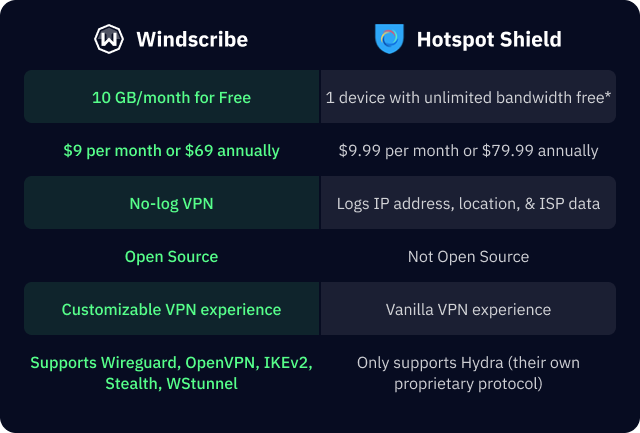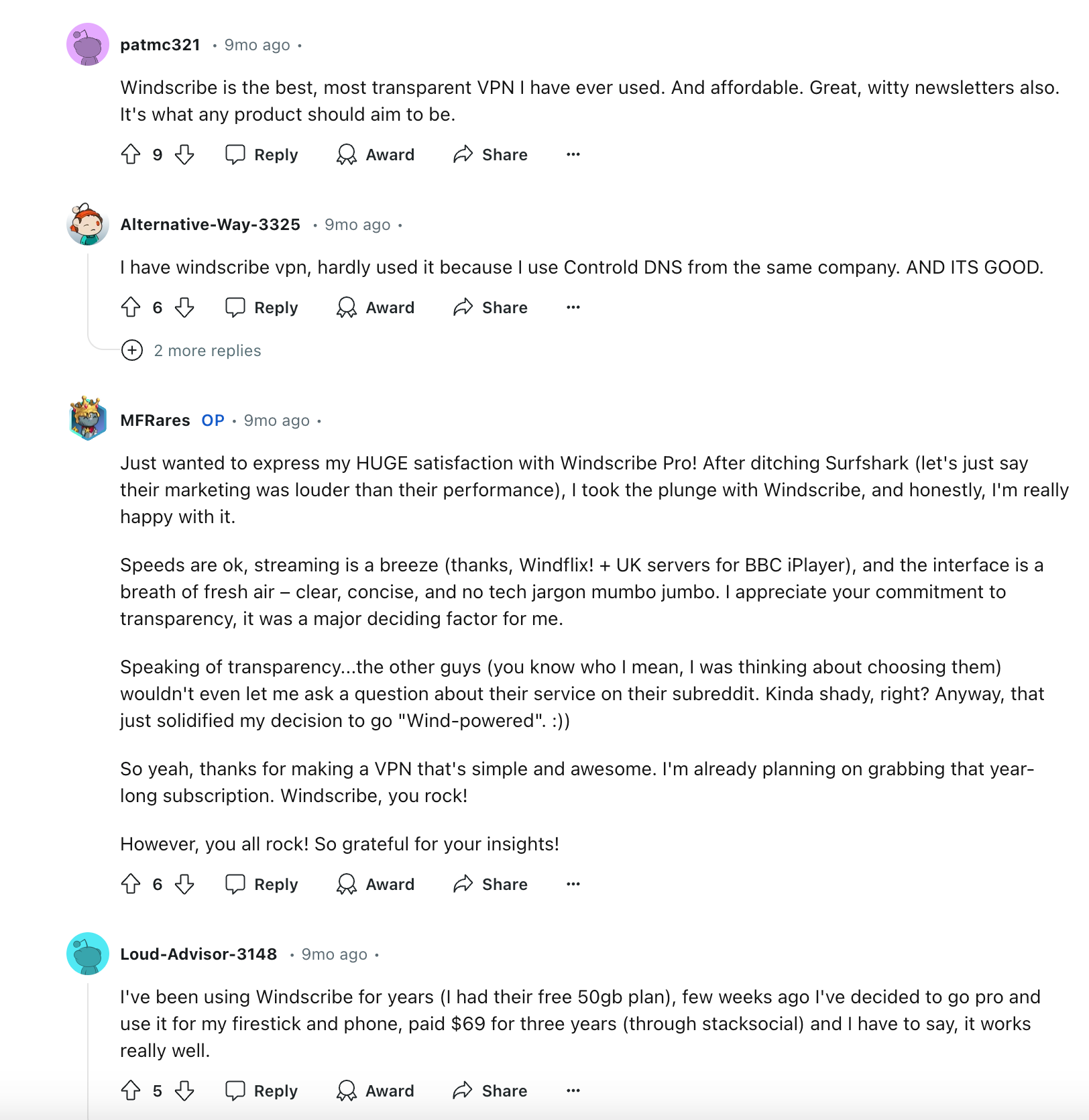The main difference between Windscribe and Hotspot Shield are the privacy tools they offer as part of the subscription. Windscribe offers a robust privacy suite, complete with ad-blocking and malware protection, alongside multiple modern VPN protocols.
Hotspot Shield has a fairly vanilla VPN offering, with little of the bells and whistles that Windscribe offers.
Let's see how Hotspot Shield compares to Windscribe, when looking at the following factors: Pricing, Privacy Tools/Features, User Experience, & Reviews.
Windscribe vs Hotspot Shield: Feature Comparison Table

Windscribe vs Hotspot Shield: Price Comparison
When it comes to price, both VPNs are nearly identical. While both offer the full suite of features to free tier subscriber, the main difference is in each companies approach to bandwidth.
Windscribe limits bandwidth on the free tier to 10 GB per month, but doesn't restrict the amount of devices you can use that bandwidth on. On the other hand, Hotspot Shield offers unlimited bandwidth, but for 1 device only, and is also supported by in app advertisements.
Windscribe's paid tier costs either $9 monthly or $69 annually (which breaks down to $5.75 per month). Hotspot Shield's paid tier comes in slightly higher, at $9.99 per month or $79.99 annually (works out to roughly $6.66 per month).
Features & Privacy Tools
What sets Windscribe apart is the array of privacy tools it offers, such as R.O.B.E.R.T., a customizable ad and malware blocker, and features that block trackers and social media buttons, ensuring maximum online privacy. Alongside a strict no-logs policy
Hotspot Shield also employs strong VPN protocols albeit not as many as Windscribe. It has also faced criticism in the past for its logging practices. In 2017, they were accused of logging users locations and IP addresses to optimize advertisements displayed in its free tier service.

Although they claim not to keep activity logs, there have been concerns about session metadata being stored, such as connection timestamps and bandwidth usage. In 2018, a vulnerability in their VPN software exposed users identities and location.

User Experience
When comparing the user interface and overall experience, both VPNs are easy to navigate, but they cater to slightly different audiences. Windscribe offers a minimalist, clean interface with an intuitive dashboard. It’s straightforward for beginners but also provides advanced customization options for power users. The browser extension integrates seamlessly with the desktop app, allowing for a more cohesive experience across devices, and the ability to improve your privacy by double hopping.
Hotspot Shield also features a user-friendly interface with simple one-click connections. Its interface is slightly more polished and could be seen as more approachable for complete novices. However, advanced users might find the lack of customization options a bit limiting compared to Windscribe.
Speed
Speed is a crucial factor in any VPN service, particularly for streaming or large downloads. Hotspot Shield is well-known for its fast connection speeds due to its proprietary Catapult Hydra protocol, which is designed to maximize speed, especially over long distances.
Windscribe, while fast, typically doesn’t outperform Hotspot Shield in speed tests, particularly for long-distance connections. However, its speeds are more than adequate for general browsing, streaming, and gaming. Windscribe's speeds are consistent, offer more VPN protocols, and the server selection across various countries ensures you can find a reliable, quick connection.
Reviews
Windscribe enjoys a strong reputation within the VPN community for its dedication to privacy, versatility, and user-friendly features. It regularly receives praise for its customizable plans, responsive customer support, and transparency. Windscribe is particularly well-regarded for its free version, which offers more data and fewer restrictions than most other free VPN services.

Hotspot Shield also enjoys positive reviews regarding its speed and ease of use, but some have raised concerns about its privacy policies, as mentioned earlier. Additionally, there have been complaints about its aggressive upselling tactics and the limitations of its free plan.
Conclusion
Windscribe excels in privacy, flexibility, and affordability, making it an excellent choice for users who prioritize anonymity and control.
Ultimately, your choice between Windscribe and Hotspot Shield depends on what you value most in a VPN. If privacy and customization are your top priorities, Windscribe is the clear winner. However, if speed and immediate customer support are essential, Hotspot Shield might be the better choice for you. Just be wary that this choice might be at the expense of your personal data!




